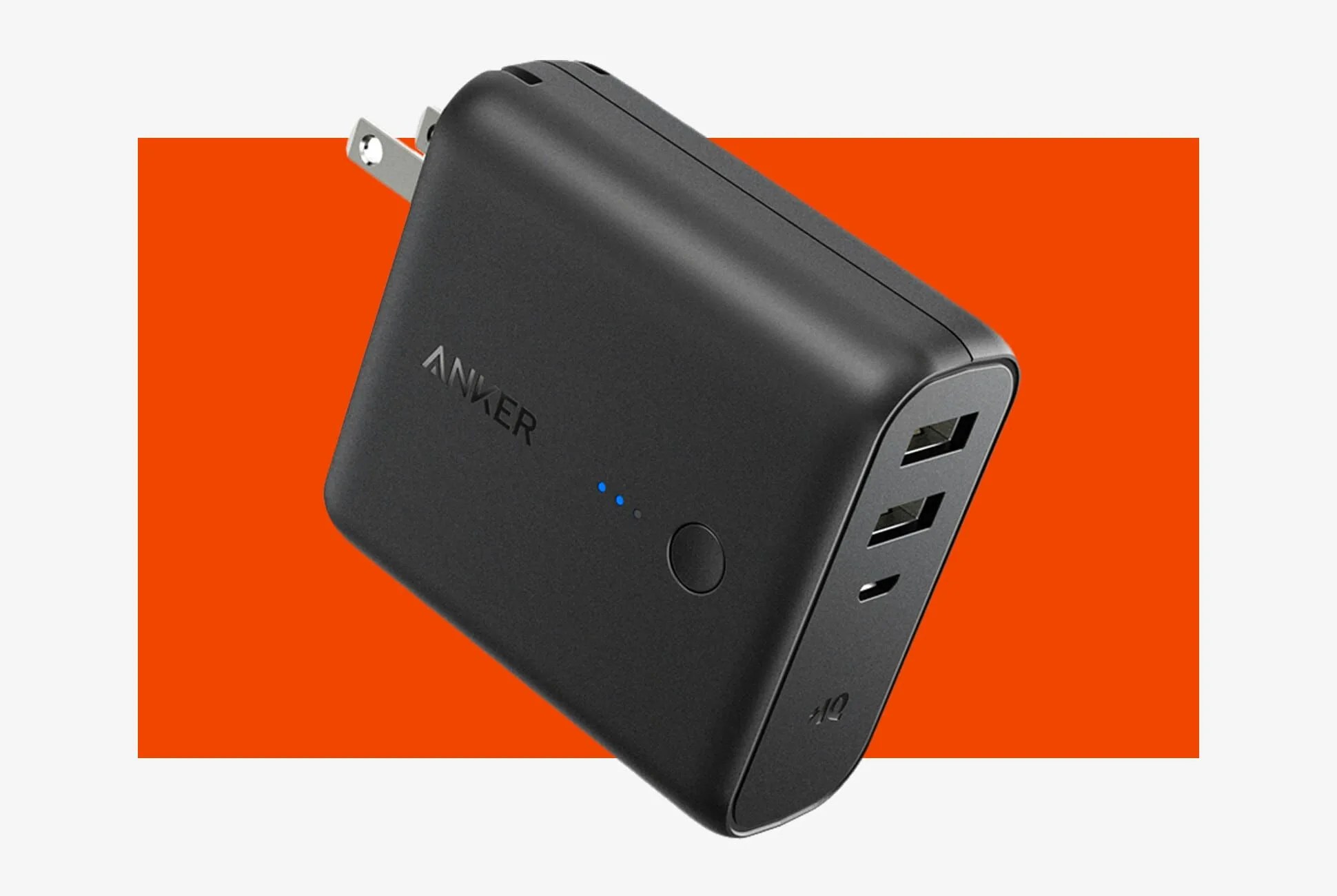There are few things that stress me out more than the terrifying notion of being left alone with my thoughts, so that means I always have a couple of things on hand: my phone, some Bluetooth headphones and, crucially, a backup battery to charge them. I’ve used dozens in my day, from big bricks to little lipstick cylinders but about two years ago the Anker PowerCore Fusion 5000 won my heart and I went and bought a few extra for good measure.
A little bit bigger than a stack of Post-Its, the Fusion has 5,000 mAh of storage, enough to let you charge the typical phone once and some change. It’s nothing compared to bigger blocks like the Anker PowerCore II 20000 I also own and which can do approximately four times the work on a full charge. If I’ve remembered to charge it. And that brings us to the beauty of the Fusion that beats mere brute force: it’s the built-in plug.
Since the Fusion is both backup battery and wall-charger, that’s one fewer thing to carry in a small bag, which is essential if, like me, you primarily travel by subway, bus and train with as little luggage as possible. But better yet, if since I use it as my one and only charger, I’ve got no choice but to plug it in before bed in order to charge my phone overnight. And since it charges itself once it is done with whatever’s plugged into it, I’m never left in the lurch with a dead or half-full backup battery. I love my PowerCore II 20000 but it takes what feels like weeks to charge.
That was what sold me on the first Fusion, but it was when I bought the second one that I really got into my groove. With a Fusion and omni-charging cable that lives on my wall to charge the gadgets in my living room and, a second set that lives permanently in my backpack, I always have a full charger ready to go at a moments notice: all I have to do is a five-second swap. And since the Fusion can usually be found for about $25, you can afford to have a few floating around the household. I’ve got three that cycle between the wall and two different bags.
I’m unabashedly in love with the Fusion, but I’d be lying if I said it was perfect. A 5,000 mAh battery is, in the grand scheme of things, pretty small. This is for maintenance charging that keeps your phone alive during typical use, not “I’m going to watch eight straight hours of max-brightness HD video on this plane” charging. For that, you’ll still want to have a big brick around, or access to an outlet.
Also, if you’re counting on charging a laptop, there are a few additional caveats. The Fusion can’t put out enough power to charge a laptop that is on and in active use, only enough to trickle charge it overnight. And because the Fusion can only charge itself when it’s not serving power to anything else, trying to charge a laptop overnight from one percent could leave you stuck with two mostly-uncharged gadgets in the morning.
A few similar chargers have my trusty Anker beat when it comes to some of these issues. The RavPower 6700mAh has a bigger battery for a dollar cheaper on Amazon right now. The ZMI Plugornot Zero not only has a bigger battery, but also supports Quick Charge 3.0, and comes in at $19. It’s superior on paper, but unlike the Fusion, I can’t vouch for it first-hand.

